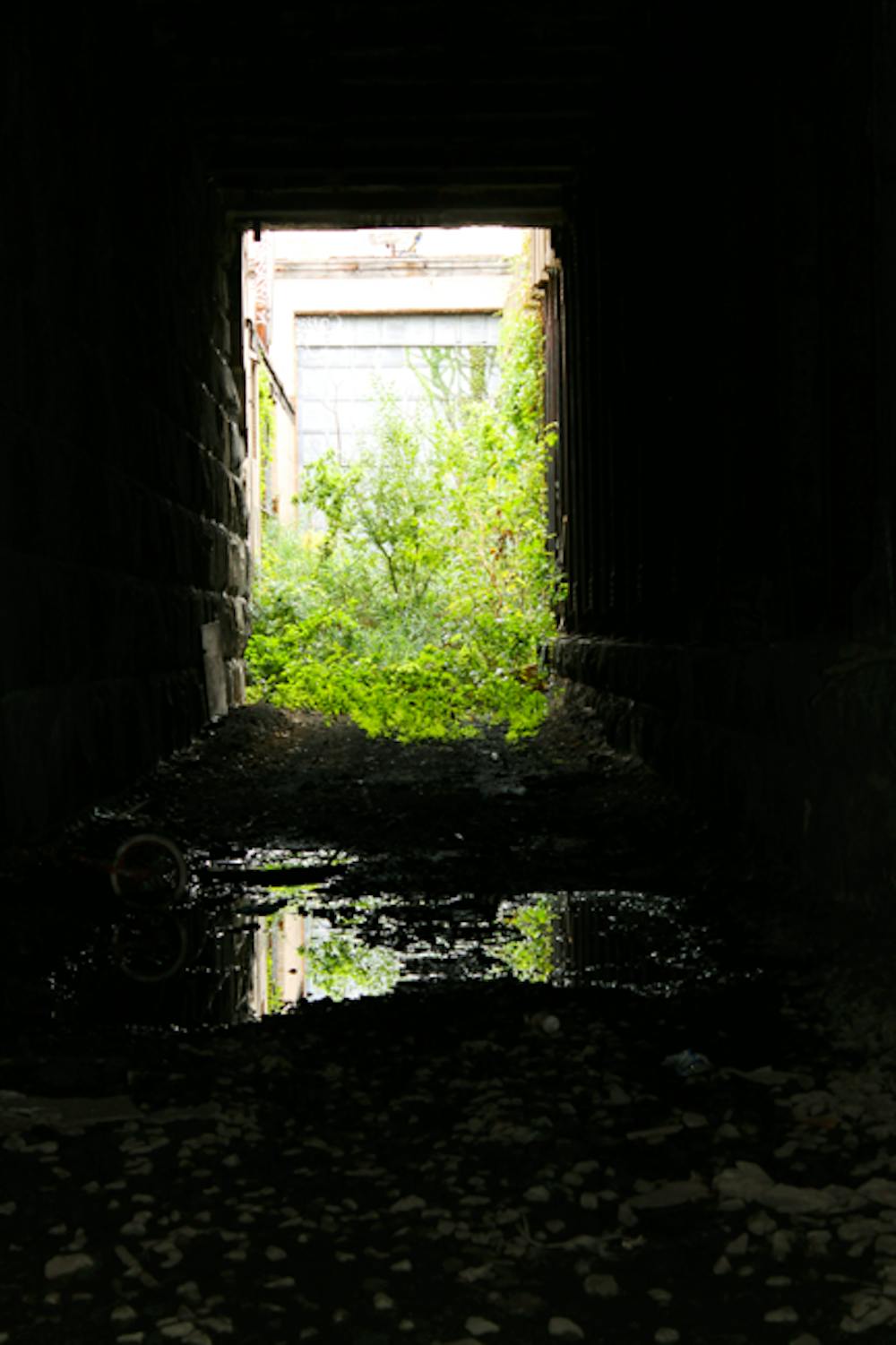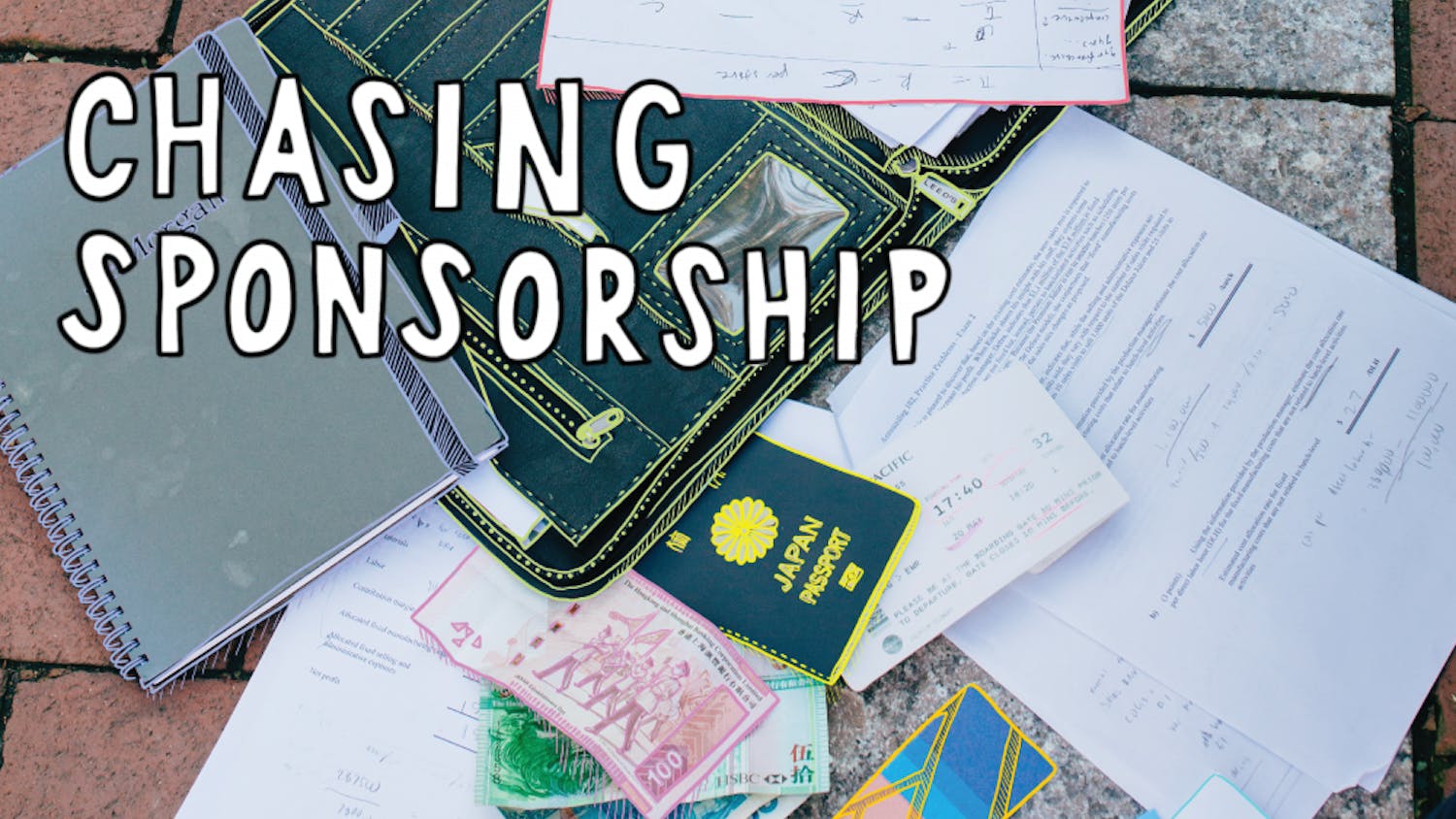There’s something inexplicably thrilling about following the winding, rusted metal of an abandoned railroad track and disappearing beneath the hums of a city only a story above. The Reading Viaduct is somewhat like an industrial treehouse, awarded only a passing glance by passerby, but treasured as an untold secret by a select few that have been drawn to its hidden charm. A three–mile expanse of unused railroad that stretches above and below about 55 city blocks, the viaduct unobtrusively descends below residential Fairmount. It weaves its way beneath the Parkway, through the impenetrable darkness of underground tunnels and a jungle of wildly overgrown plant life. Its transitions are characteristically abrupt and unforgiving; it has the stubborn self–assertion of a forgotten industrial hero deemed irrelevant by the rapidly changing face of Philly’s economy.
The roots of this pseudo–urbanized wilderness first began to take hold of the site in 1984, when trains ceased to run through the Viaduct. The corridor, which connects several neighborhoods north of Center City with a number of Philly’s main museums and historical institutions, stands defunct, an eyesore to outsiders and often overlooked by locals.
30 years ago, Paris faced a similar dilemma regarding the discontinuation of its Vincennes railway line. The line was abandoned in 1969, but was not allowed to sit idle for long. Bringing in a team of architects and landscape designers, the city repurposed the structure to form the Promenade Plantée, the first elevated railroad to be established as a public green space.
Since then, the transformation of abandoned railroads has grown into something of a worldwide trend. Atlanta and Chicago are in the process of implementing similar plans, while the High Line in New York, first opened to the public in 2009, has been held up as an inevitable point of comparison for the viaduct project. Much like the High Line, a park on the viaduct would open up a new pedestrian path for the city, but it diverges from New York’s project in that its width would also allow for bicycle traffic.
Philadelphians had their eye on their own abandoned railroad and its undeniable potential long before the High Line was completed. In 2003, a team of locals led by Sarah McEneaney and John Struble founded the Reading Viaduct Project — inspired by the grassroots efforts of the Friends of the High Line — with the intent of developing the elevated portion of the Viaduct known as the SEPTA spur.
Penn quickly caught on in 2004, after then–City & Regional Planning graduate student Kyle Gradinger brought the space to the attention of Penn Praxis, the student and faculty consulting practice in the School of Design. Teaming up with the Reading Viaduct Project, Penn Praxis hosted a weekend–long design competition focused on the railroad. However, “ownership of the Viaduct,” says PennDesign Professor Eugenie Birch, “presented a challenge in implementing any of the ideas.”
Part of the land is owned by Reading International, which once controlled the region’s railroads and now oversees global cinema and real estate development, while a smaller portion is owned by SEPTA.
At the time of the competition, “neither owners had any interest whatsoever in the project,” Birch says.
However, several years later, the development began gaining momentum. In 2010, Paul vanMeter and Liz Maille formed ViaductGreene, which incorporated plans to develop both the SEPTA spur and the old rail line’s underground portion — the full three miles. Along with the Reading Viaduct Project, they opened communication with the Center City District to conduct feasibility studies, funded by grants from the William Penn Foundation and Poor Richard’s Charitable Trust, on developing the area.
The analyses concluded that renovating the area along the lines of ViaductGreene’s and Reading Viaduct Project’s ideas would be less expensive for the city than demolishing the entire structure.
Fast–forward to 2012. With the establishment of the new Barnes Foundation and the With Art campaign, Philadelphia has been making strides to recreate itself as a global center for the arts. While these efforts have caused the rest of the world to take note, the viaduct maintains the potential to connect Philadelphia’s arts scene to the city on a more localized scale.
According to co–founder of the Slought Foundation and Penn English and Art History lecturer Aaron Levy, a viaduct physically running between the museums and Center City would “encourage the museological culture of the city to become more demographically responsive” to the social and cultural tensions already in place in Philadelphia. Ultimately, though, “social relationships are not built around physical infrastructures alone,” Levy says. “Construction on the viaduct would necessitate civic engagement and cooperation that must extend beyond structural designs.”
In March 2012, with further grant funding and SEPTA’s support, designs were incorporated for the elevated SEPTA spur of the railroad. Paul Levy, chief executive of the Center City District, along with Mayor Nutter and commerce director Alan Greenberger, entered negotiations with Reading International to include the remaining portion of the space in the designs. The incorporation of the Reading International–owned section would solidify the viaduct as a crucial artery for Philadelphia’s cultural heart.
Yet, the Reading Viaduct project’s recent momentum has left behind a wake of opposition. Preliminary plans to establish a Neighborhood Improvement District (NID) in Callowhill were vehemently rejected by locals last February. Properties in that section would be assessed an extra seven–percent tax, raising about $250,000 a year to be used for cleaning streets, planting trees, and adding lights. Over a dozen such districts have been implemented in the past 20 years with overwhelming support. But the Callowhill NID was the first to be rejected. Why?
Many of the neighborhood’s older and lower income residents argue that they have been kept in the dark about the planned district, which they see as merely clearing the path for the Reading Viaduct development. If the Reading Viaduct vision were to be realized, it would continue to raise property values that have already been climbing in Callowhill and Chinatown North communities over the past few years. According to Birch, there are both winners and losers: while property owners would enjoy greater values, renters would soon suffer the brunt of escalating property taxes.
Such fears prove valid in light of the High Line project. Before it was constructed, the lowest property values of the surrounding residential areas remained eight percent below the median for Manhattan. By 2011, however, they had appreciated above and beyond the residential values of the entire borough. In fact, such lower–priced areas experienced a correspondingly faster rate in value escalation.
Groups such as the North of Vine Association (NOVA) insist that the vacant spaces should instead be utilized to incorporate low–budget housing. NOVA agrees that the neighborhood needs improvement, but continues to push for the installation of surveillance cameras and floodlights for better security as an alternative to an NID intervention.
Paul Levy has continued to work on expanding low–budget accommodation while vanMeter emphasizes the idea of developing the space in portions. Gradual implementation of the plans would accommodate both housing construction and work on the viaduct. “To issues of financing and gentrification,” he says, “our response to that is we see them all as design problems with workable, usually stimulating and exciting solutions.”
In the midst of all this momentum, vanMeter recognizes the issue of transparency as a dominant source of opposition to the project. “As co–founder, I feel a responsibility to meet with as many people as we can. Our work is to inspire the inspired in the most open, accessible and transparent way possible. That’s how I came to introduce both the Temple and University of Pennsylvania classes to the site.”
Some of those students — Penn Design senior Susan Kolber, along with Amy Syverson and Diana Fernandez from Temple — have converged to produce "above | below | beyond," an exhibition of their designs for the railroad opening tomorrow at Next American City. One track in the maze of dialogue about the viaduct, the show aims to lift the proverbial veil that often exists between urban development and the local community. The exhibit, which includes an open discussion board where audiences can share their own creative visions, aims to include city residents in the planning process.
Kolber, along with her partners from Temple, expresses hope that “collecting and exhibiting student designs and information would give Philadelphians an example of the possibilities and inspire them to think of their own ideas.”
Even with efforts like "above | below | beyond," ViaductGreene and the Reading Viaduct Project opening Philadelphia’s eyes to the potential of the unused structure running through its midst, the actual implementation of the viaduct vision has still more obstacles to tackle. Securing funding, Kolber said, will require a detailed design of its own, as will collaboration with the surrounding neighborhoods. The final push? “Political will,” vanMeter says. “That’s about it. Political will.”
---
Eillie Anzilotti is a senior from Oakland, CA. She is studying English with a concentration in Creative Writing.
Megan Ruben is a junior from Denville, NJ. She is studying Art History and is pre–med.
Eillie and Megan are co–editors of the Arts Section.







